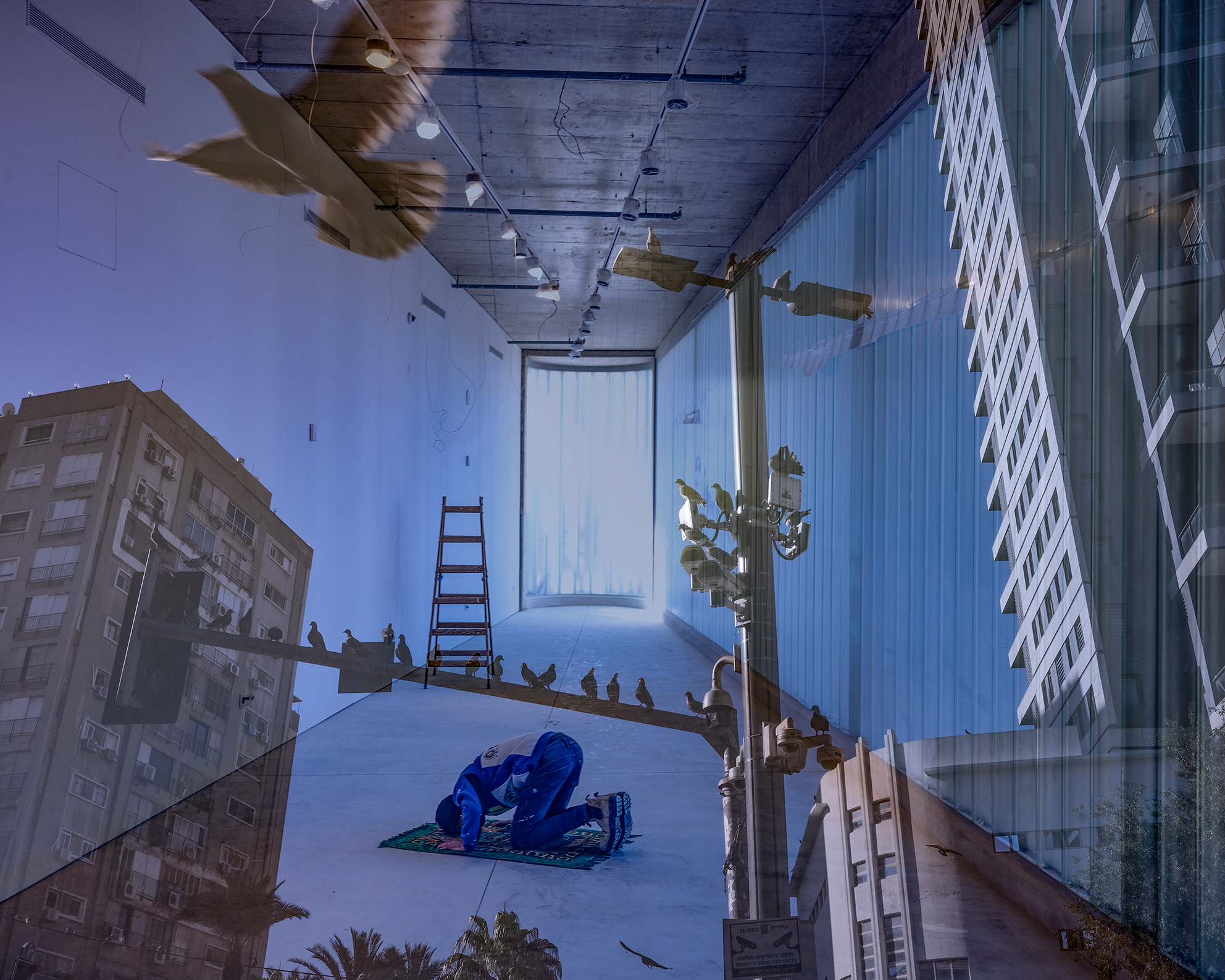
The Institution
The Museum and Israeliness
The Ramat Gan Museum is the only museum in Israel that is defined as a museum of Israeli art. The significance of the museum’s reopening in the middle of a health, political and social crisis raises poignant questions: Is it an act of evolution and change or a glorification of institutional authority? Will the museum inevitably become part of the local power systems that share in the violent reality in which we live?
In the pan-Israeli context, this exhibition seeks to examine the ways in which museum institution reflects the story and ethos of Israeli society, as well as how these are embodied in its very foundation. With this in mind, one may ask, are museums for art in Israel capable of leading socio-political change, or are they inextricably linked to the institutional infrastructure?
In the background of the exhibition is the discourse of “institutional critique” that began in the 1970s and 1980s with the work of artists such as Hans Haacke, Daniel Buren, Marcel Broodthaers, Barbara Kruger, Jenny Holzer and others. These artists questioned the basic assumptions concerning the autonomy of the work of art, the neutral context of the “white cube,” and the existence of objective aesthetic judgment devoid of the context of status.
Regarding the local context loom the words of curator and theorist Ariella Azoulay, who distinguished between “visible institutions” — such as a university, museum and library — and the “invisible institutions” embodied in the cultural canon and accepted norms. She believes that since power is invisible, it is crucial that artists intervene in representations disseminated by institutions of power in the public space in Israel.
The first section of the exhibition presents works representing the violent yet disguised power of the museum space, in which the audience is also the main target. These works deal with the tension between a work that plays a real part in a struggle and protest and a work that represents protest but adapts itself to the exhibition gallery and exclusive living room.
The second section deals with the museum institution’s mechanisms of willful oversight in relation to certain communities and presenting narratives from a variety of cultures: Western and Eastern, Israeli-Jewish and Arab-Palestinian, female and male, ultra-Orthodox and secular, and more. The works shatter accepted dichotomies, declare the failure of identity politics and the multicultural approach, and point out how local museum practices reflect the white, Western patrimony.
The third section examines the museum’s presence in the urban architectural space, which also symbolizes the existing elitist order. The works challenge the classic conception of the museum as a Parnassus, a “mountain of the muses,” built in a “sacred” place, removed from the urban street and its inhabitants.
The museum institution is tasked with reexamining its institutional-economic structure and social relevance. In 2020, the National Museums Association reconsidered the definition of the term “museum” and the status of museums in a post-colonial society. In this context, the exhibition seeks to ask, what is the role of the museum as a public Israeli institution? What are the connections it maintains in its activities with the publics it represents and its visitors?
Main image: Pavel Wolberg, Double Exposure, 2021, Color prints
The Institution
The Museum and Israeliness
Curator: Svetlana Reingold
Opening: Thursday, December 23, 2021

